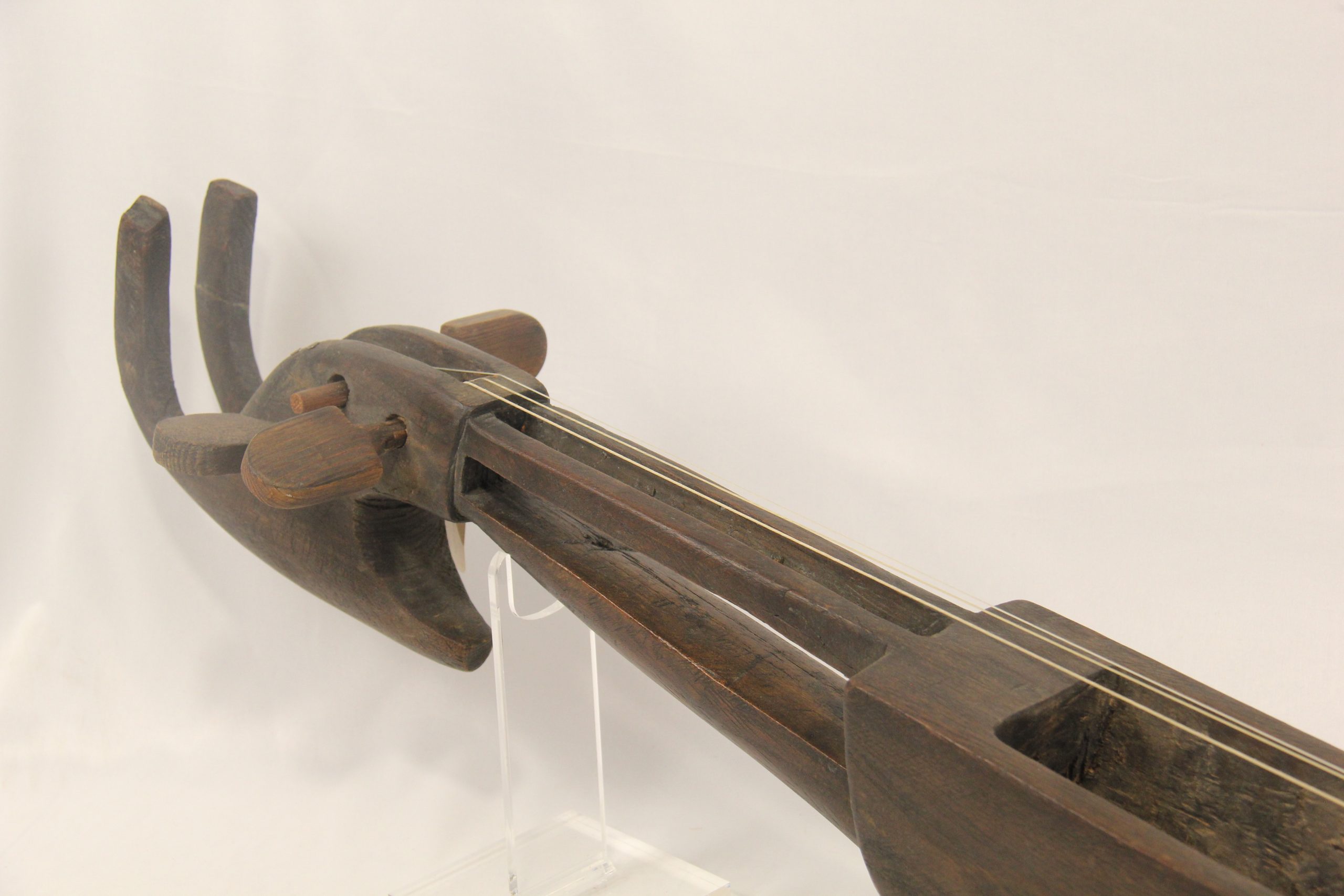Lute
Likely some variation of the Rabab, a stringed Afghan lute instrument. The Rabab is known as the “national Afghan instrument.” It was used in ancient court music but is also still very prevalent in modern Afghan music and entertainment. There are two main types of Rabab: The Dhrupadi Rabab, with a pear shaped body, is known for its use by famous court musician Mian Tansen of the Mughal Empire Akbar. It can be found in old miniature paintings of musicians from this era. Today, this type of Rabab is only found in Afghanistan and Kashmir, though it is said to have influenced various Indian stringed instruments, including the Sarangi.
The Kabuli Rabab, with a boat-shaped body, is the variation more closely associated with the “national Afghan instrument” title. These instruments often use a combination of gut and metal strings which are in place over a membrane or hide covering for the resonator, near the bridge. The seni rabab, which is similar to the Dhrupadi Rabab, is often mentioned in ancient texts but is very different from the Afghan Kabuli Rabab. Typically played with a bow, as the narrow section of the body (space for the bow to pass) indicates.
Sources
- Courtney, David. Rabab. Accessed June 15, 2022. http://chandrakantha.com/articles/indian_music/rabab.html.
- “Rabab and Its Various Forms.” Strings Museum, January 28, 2019. http://stringsmuseum.com/rabab-and-its-various-forms/.






